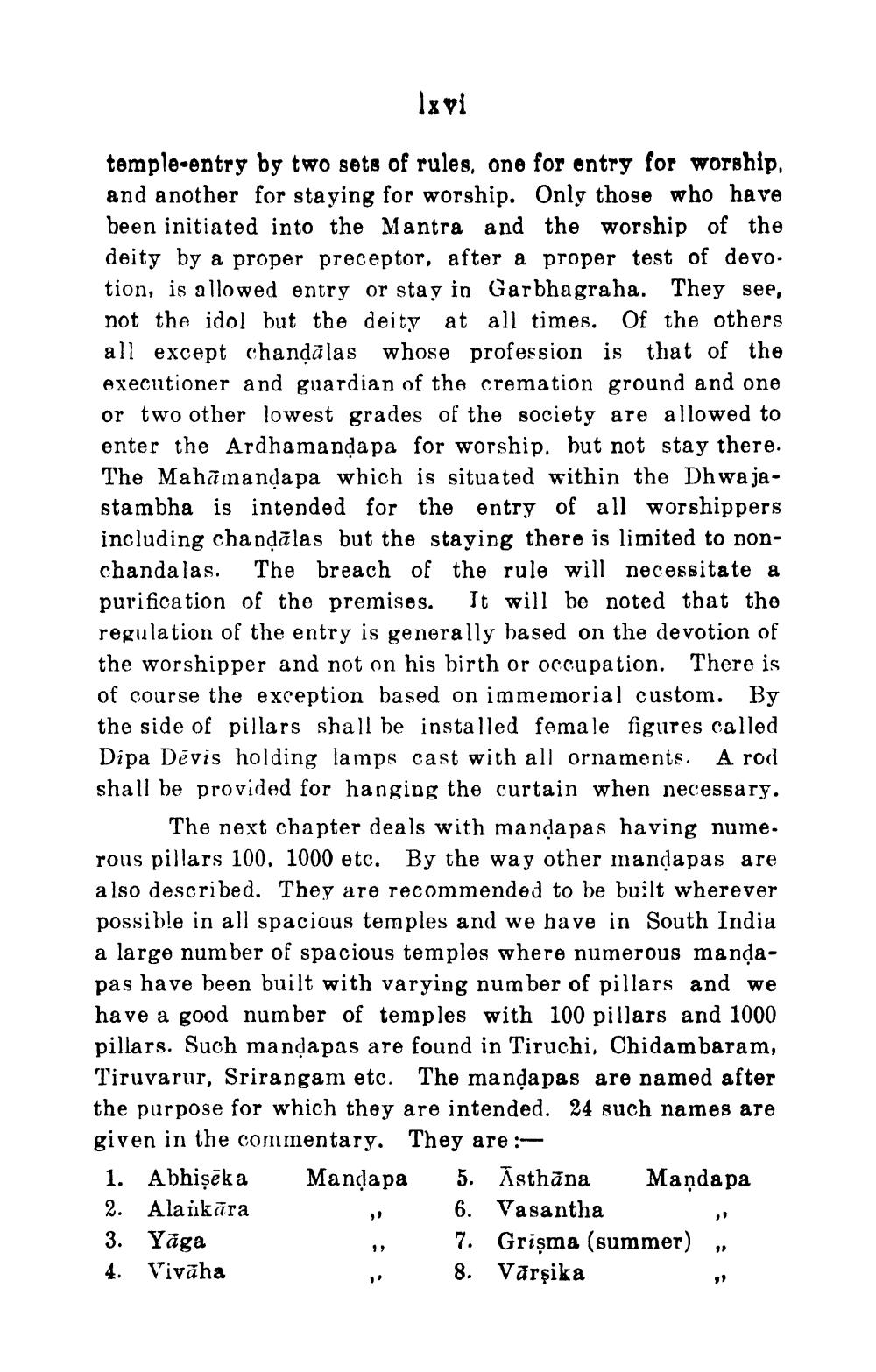________________
Ixvi
temple-entry by two sets of rules, one for entry for worship, and another for staying for worship. Only those who have been initiated into the Mantra and the worship of the deity by a proper preceptor, after a proper test of devo. tion, is allowed entry or stay in Garbhagraha. They see, not the idol but the deity at all times. Of the others all except chandalas whose profession is that of the executioner and guardian of the cremation ground and one or two other lowest grades of the society are allowed to enter the Ardhamandapa for worship. but not stay there. The Mahamandapa which is situated within the Dhwajastambha is intended for the entry of all worshippers including chandālas but the staying there is limited to nonchandalas. The breach of the rule will necessitate a purification of the premises. It will be noted that the regulation of the entry is generally based on the devotion of the worshipper and not on his birth or occupation. There is of course the exception based on immemorial custom. By the side of pillars shall be installed female figures called Dipa Dēvis holding lamps cast with all ornaments. A rod shall be provided for hanging the curtain when necessary.
The next chapter deals with mandapas having nume. rous pillars 100. 1000 etc. By the way other mandapas are also described. They are recommended to be built wherever possible in all spacious temples and we have in South India a large number of spacious temples where numerous mandapas have been built with varying number of pillars and we have a good number of temples with 100 pillars and 1000 pillars. Such mandapas are found in Tiruchi, Chidambaram, Tiruvarur, Srirangam etc. The mandapas are named after the purpose for which they are intended. 24 such names are given in the commentary. They are:1. Abhișēka Mandapa 5. Āsthāna Manda pa 2. Alankāra
6. Vasantha 3. Yāga
7. Grişma (summer) , 4. Vivāha
8. Varșika




